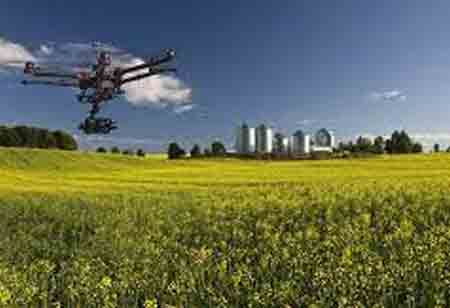THANK YOU FOR SUBSCRIBING
Pro's And Con's Of Drones
Drones, also known as unmanned aerial vehicles (UAVs), are aircraft devices capable of flying above the ground and performing specific tasks without direct human piloting

By
Apac CIOOutlook | Monday, October 04, 2021
Stay ahead of the industry with exclusive feature stories on the top companies, expert insights and the latest news delivered straight to your inbox. Subscribe today.
Many drones are equipped with digital imaging technology and communication systems, making them very flexible devices capable of performing a wide range of activities.
Fremont, CA: Drones, also known as unmanned aerial vehicles (UAVs), are aircraft devices capable of flying above the ground and performing specific tasks without direct human piloting. Instead, they can get remotely controlled by a human operator or autonomously piloted by computers.
Many drones are equipped with digital imaging technology and communication systems, making them very flexible devices capable of performing a wide range of activities. An increasing variety of businesses and users, including military, government, commercial, and recreational users, are adopting this technology, so now is a perfect moment to analyze the significant advantages and downsides of aerial drones.
Advantages
- Maintaining a Safe Environment
UAVs may be helpful to perform several functions that contribute to a safer environment. For example, with their remote monitoring capabilities, drones may monitor circumstances, possibly report hazards, and alert individuals of dangerous conditions, therefore assisting in creating and maintaining a safe environment. Camera-equipped drones, for example, can analyze traffic patterns and assist drivers in avoiding high-risk locations.
- Affordable Cost-Saving Technology
Because drone technology is constantly improving, the cost of acquiring a drone isn't as expensive as it once was. As a result, their popularity among the general population has skyrocketed, and users can now even find secondhand drones for sale. Moreover, it implies that drones are no longer exclusive to the military, law enforcement, or the privileged.
UAVs can also give several cost-saving options in various domains; for example, they can directly replace multiple manned activities, saving on labor costs.
- Easily Controllable
The new sophisticated drone-control technology makes it possible for individuals with little expertise to operate drones for simple tasks. Along with the inexpensive cost of most models, it has contributed to the growing popularity and accessibility of UAVs across a diverse spectrum of users.
Disadvantages
- Privacy Violation
While drones have several advantages, they are also a technology that may get readily exploited since UAVs can be programmed to breach the privacy of a specific target group or individual. In addition, various personal freedoms may get compromised in the name of ensuring private or public protection using a drone, given the many causes that demand its usage.
- Potential Threat to Nature
Drones are prone to wild animal assaults and can potentially endanger wildlife. For example, when flying drones in an area with a significant population of wild animals, there is an excellent danger of colliding with a tree or colliding with a vulnerable species.
- Unclear Legislation
Because drones' fast and widespread deployment is still in its early stages, legislation is slowly catching up. Specific laws for tiny drones that apply to commercial and recreational users have developed, although there are still some uncertainties. Laws, procedures, and regulations governing drones and protecting property owners from aerial trespassing are still being created; therefore, UAV technology is still operating in a legal grey area.





